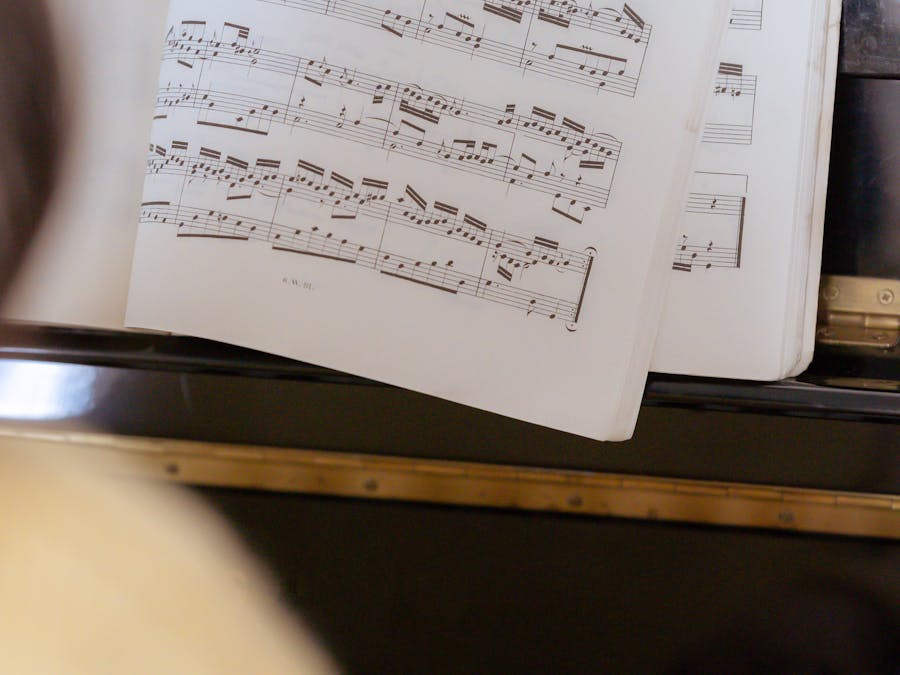 Piano Guidance
Piano Guidance
 Piano Guidance
Piano Guidance

 Photo: Monstera
Photo: Monstera
C-flat major (or the key of C-flat) is a major scale based on C♭, consisting of the pitches C♭, D♭, E♭, F♭, G♭, A♭, and B♭.

For every note in the scale, there is a chord that starts on that note. The way to figure out what chords are in a key is to look at each note in...
Read More »
The short answer is, yes! It's ok to start learning on a keyboard or a digital piano. There a just a few factors to take into consideration when...
Read More »
If you want to be a professional classical performer, you're looking at a minimum of 10 to 15 years of concentrated study with a master teacher,...
Read More »
Ludwig van Beethoven and Für Elise Beethoven wrote this small gem on April 27, 1810, and called it a “bagatelle.” The term's meaning is a trifle or...
Read More »
Pianoforall is one of the most popular online piano courses online and has helped over 450,000 students around the world achieve their dream of playing beautiful piano for over a decade.
Learn More »Most composers prefer to use the enharmonic equivalent B major, since it only contains five sharps as opposed to C-flat major's seven flats. However, the middle section of Frédéric Chopin's Contredanse in G-flat major is written in C-flat major, as are the middle (Trio) sections of two of Ernesto Nazareth's Brazilian tangos for piano, "Chave de Ouro" and "Labirinto" (both with a home key of G-flat major), as well as the final half (last two themes) of William Bolcom's rag for piano, "Seabiscuits". There is a brief passage in the first movement, "Evocación", of Iberia by Isaac Albéniz which suggests the key of C-flat minor by adding the necessary three double-flats as accidentals. The surrounding passages are in C-flat major, with a 7-flat key signature. The movement is in sonata form, in the key of A-flat minor, so this places the second theme in the orthodox relative major key (and in the also-orthodox tonic major key of A-flat major when it reappears near the end of the piece). The slow movement of Ludwig van Beethoven's Piano Sonata No. 12 has a principal theme that modulates from A-flat minor to C-flat major, before moving to what would theoretically be C-flat minor, but is notated as B minor (every note in this passage requires an accidental, due to the key signature of seven flats). A few other works by Beethoven have significant passages in C-flat major, although they usually notate this with accidentals in some other key signature, because C-flat major's seven flats make it a difficult key to use; for example: C-flat major is used for Benjamin Britten's Interlude in C-flat major for harp, several of Max Reger's Canons in All Major and Minor Keys (Book 1 Nos. 62 and 63, and Book 2 No. 48), and No. 29 from the Thirty Preludes in All Major and Minor Keys by Christian Heinrich Rinck. In some scores, the C-flat major key signature in the bass clef is written with the flat for the F on the second line from the top. This can be seen, for example, in the Albéniz example given above: Iberia, 1st movement: "Evocación", about two-thirds of which is in 7 flats, and every bass-clef staff of which shows this variant. This is also seen in the second movement of the Beautiful Danube waltz in the Boosey & Hawkes concert band edition.

Real pianists are marked by brains that efficiently conserve energy by allocating resources more effectively than anyone else. Dr. Timo Krings...
Read More »
The teenagers who listened to a lot of music were 8 times more likely to be depressed than those who didn't listen to music very often. The amount...
Read More »
Rekeying your lock is almost always cheaper than replacing a lock. This is because of the cheaper price of the key pins inside the locks, whereas...
Read More »
The 11 Hardest Musical Instruments to Learn Violin. The violin is a wooden stringed instrument that's part of a larger family of similar...
Read More »